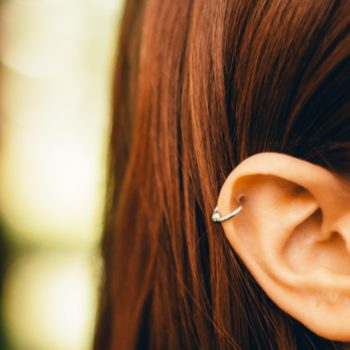Ears, lips, navel, eyebrows. Piercing fashion, especially among teenagers and young people, is always very popular and now affects many areas of the body. The practice of piercing the skin, however, could lead to several complications that must be known to avoid them. Taking some basic precautions, finding out about the positioning of the piercing and the risks of infection is an essential step before proceeding to get a piercing. We discuss this with Dr. Elisabetta Guanziroli, dermatologist at Humanitas.
Piercing, knowing the risks
A piercing is the creation of an opening in a part of the body for the insertion of jewelry. It is rarely made under previous local anesthesia.
Any type of piercing carries a risk of complications, including:
Allergic reactions and other risks
Some piercing jewelry, especially piecings made of nickel, can cause allergic reactions. When applied to the tongue or around the mouth, some rings can also chip and break the teeth and damage the gums. In addition, swelling of the tongue after a new piercing can interfere with chewing, swallowing and sometimes breathing.
In addition, piercing can activate inflammatory skin diseases, such as psoriasis, at the site of application in patients who are affected or predisposed to it.
Very common are skin infections, which manifest themselves as reddening or purulent secretion in the wound in which a piercing has been inserted.
In these cases it is essential to consult a doctor to obtain all the information needed to treat the problem properly as it is very likely that a drug treatment is necessary.
Diseases transmitted by blood
If the equipment used for piercing is contaminated with infected blood, various blood-borne diseases, including hepatitis B, hepatitis C, tetanus and HIV, can be contracted.
The execution of aesthetic ornaments in non-certified rooms, or do-it-yourself practices with inadequate tools, and without respect for hygiene rules can further increase the risk of transmission of these infectious diseases.
Safety-related precautions
To ensure that the piercing is done safely, it is necessary to contact only and exclusively specialized operators who work with sterile equipment. The applicator must wash his hands and wear a new pair of disposable gloves for each piercing.
For the ears, a piercing gun is often used to push an earring, while for other piercings a needle is used and then the chosen piece of jewelry is manually inserted into the hole. The needles must always be hot sterilized (in an autoclave) after each use.
The choice of jewellery
Hypoallergenic jewellery is usually made of stainless steel, titanium, niobium or 14 or 18 carat gold.
When should I contact my doctor?
A new piercing may cause the skin around it to blush, swell or bleed slightly. If the swelling, redness, and bleeding last longer than a few days, contact your doctor. Early treatment can help prevent potentially serious complications.








